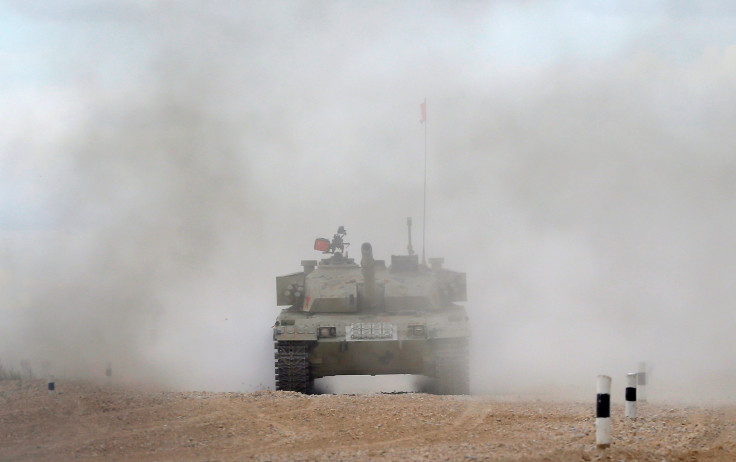Watch: China Tests Unmanned Battle Tanks, Could Soon Equip Them with AI

In a bid to modernize battlefield resources, the Chinese Army has started trialing unmanned tanks, according to a new report from state-run publication Global Times.
The upgraded military vehicles are currently being tested with a distant manned console, much like remotely operated drones. However, the People's Liberation Army Ground Force, aka PLAGF, also plans to integrate them with artificial intelligence, in order to make them nearly self-operable.
A short video from CCTV, a prominent state television broadcaster in the People's Republic of China, recently appeared on the internet showcasing one of the unmanned vehicles being tested. The clip features a modified version of a dated Type 59 tank moving forward and backward like a remote-controlled car and a distant Chinese Army official manning its control-box a few meters away.
無人戦車(59式改) pic.twitter.com/cECf9uV1Ej
— OedoSoldier (@OedoSoldier) March 15, 2018
Though the video does not reveal details of the technology that went into the tank, one can see two antennas on top of its turret and two screens on the control box. While the screens don't provide a clear view, it is likely that one offers a driver’s eye-view, and the other is boresighted into the barrel of the vehicle.
"A large number of due-to-retire Type 59 tanks can be converted into unmanned vehicles is equipped with artificial intelligence," Liu Qingshan, the chief editor of Tank and Armored Vehicle, told the Global Times. The capability would not only enable the army to conduct missions that are too risky for manned crews but also integrate information from satellite, aircraft, or submarines in real time.
The Type 59 tank is a China-produced version of an old Soviet tank built in the mid-1950s. The vehicle went into mass production in 1963 and formed the backbone of the Chinese armed forces until the early 2000s.
The vehicles, with decades-old tech, have now been replaced by the advanced Type 99 on the front lines, but thousands of them are still in the warehouse, something that China is counting on to go ahead with these experiments. The analog control and transmission system embedded with these vehicles also make them appropriate candidates to be converted to remote-controlled or AI-equipped unmanned vehicles.
The report comes just as the U.S. and Russia continue to bolster the use of machine intelligence into weapons, something that has widely been criticized by technology luminaries from different parts of the world.
© Copyright IBTimes 2025. All rights reserved.



















